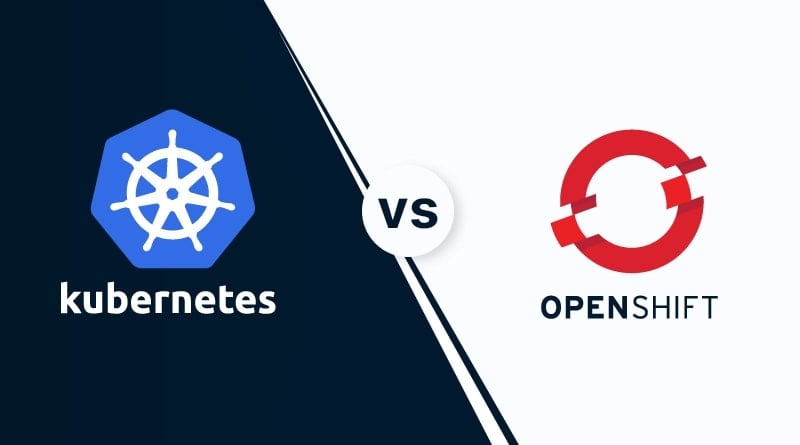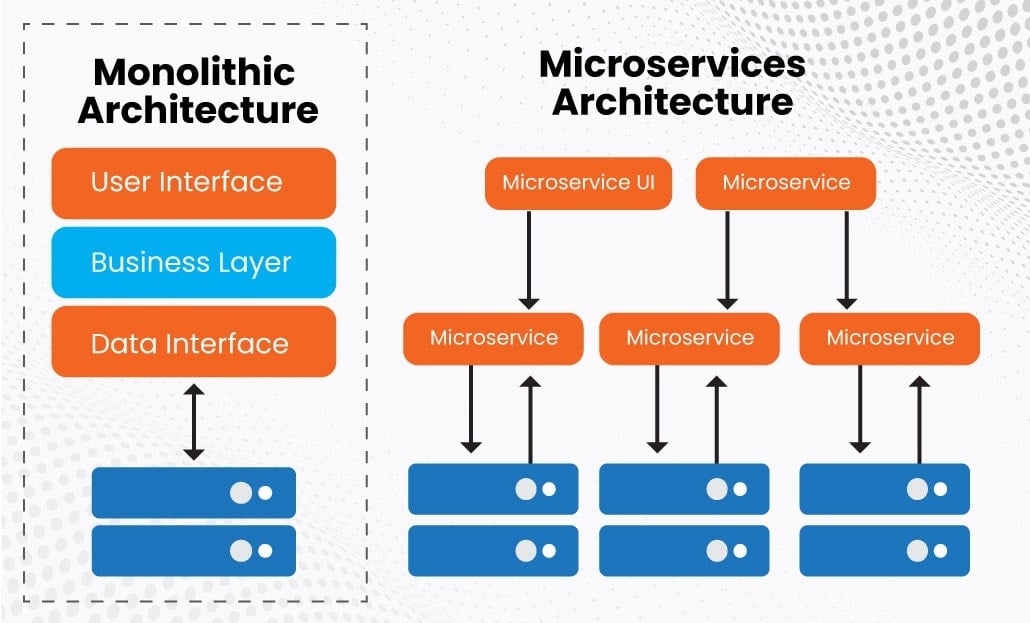Kubernetes burst onto the scene as the backbone of DevOps back in 2014, revolutionizing application deployment, scaling, and management. Fast forward, and OpenShift, built on Kubernetes, has emerged, sparking curiosity: why do we need another platform? The answer lies in the distinctions between the two; we're here to highlight those differences.
What is Kubernetes?
Kubernetes, affectionately known as k8s, stands tall as a powerful open-source container orchestration system, automating the deployment and management of applications.
Pros of Kubernetes:
- Automated Scaling: Kubernetes continuously and seamlessly manages containerization, dynamically scaling applications based on resource demand, saving you from resource wastage headaches.
- Extreme Flexibility: No infrastructure overhaul required! Kubernetes can flexibly deploy on any platform or infrastructure without additional third-party services.
Cons of Kubernetes:
- Separate Team and Resources Needed: Kubernetes demands dedicated engineering teams and resources for effective implementation and management, which can burden smaller companies financially.
- Compromised Security: Kubernetes' complexity, if not properly managed, can lead to vulnerabilities, exposing your system to potential security breaches, just like the infamous Tesla crypto-jacking attack.
What is OpenShift?
OpenShift, powered by Kubernetes and developed by Red Hat Inc, is a hybrid cloud application aiming to streamline application development, available through a subscription-based model.
Pros of OpenShift:
- Enhanced Developer Experience: OpenShift offers a developer's paradise with user-friendly tools, multi-language support, and an integrated development environment, making development tasks a breeze.
- Security: Elevate your security game! OpenShift provides advanced security capabilities, such as access controls, networking, and a built-in scanner in the enterprise registry.
Cons of OpenShift:
- Small Community: With a smaller community mainly comprising Red Hat developers, finding solutions in OpenShift can sometimes be a bit challenging.
- Closed Ecosystem: OpenShift's ecosystem is somewhat closed, limiting usage to a select set of operating systems.
Differences between Kubernetes vs. OpenShift
|
Aspect |
Kubernetes | OpenShift |
| Type | The open-source container orchestration system | Hybrid cloud application powered by Kubernetes |
| Deployment Flexibility | It can be deployed on any platform or infrastructure | Requires specific operating systems like Red Hat Enterprise Linux (RHEL), CentOS, Fedora, and Red Hat CoreOS |
| Installation Flexibility | Offers more installation flexibility, supporting major operating systems without third-party help | Requires RHEL or Red Hat Atomic for OpenShift 3, RHEL CoreOS and optionally RHEL for compute nodes on OpenShift 4, and RHEL or CentOS for OKD |
| Deployment Process | Requires manual setup, pulling code from Git, and setting up containers with a chosen CI/CD pipeline | Simplifies deployment through automated pipeline creation and automation using pod logic |
| Security | Complex and requires expertise to handle vulnerabilities effectively | Boasts stricter security policies, preventing simple container image running and running containers as root |
| User Interface | Requires additional setup, such as installing Kubernetes dashboard and creating a bearer token for authentication | Offers a beginner-friendly interface with a single login page for easy access to the console |
| Support | No dedicated support, relies on community support | Paid platform with dedicated support options for enhanced assistance |
| Community Size | Large and active community | Smaller community, mainly comprising Red Hat developers |
| Ecosystem | Flexible and can be deployed on any infrastructure | Limited to a closed ecosystem, restricting usage to specific operating systems |
| Cost | Free and open source, cutting down costs significantly | Subscription-based platform with associated costs as clusters grow |
Real-Life Use Cases: Kubernetes vs. OpenShift
Kubernetes:
- Bose: Bose, a renowned audio equipment platform, utilized Kubernetes for its scaled IoT Platform-as-a-Service running on AWS. Launched in 2017, the platform supported a staggering 3 million connected products.
- CERN: The European Organization for Nuclear Research (CERN) faced high data loads before significant conferences. They adopted Kubernetes on public clouds to accommodate peak sessions, granting complete control over automation and reducing cluster-making time from 3 hours to just 15 minutes.
OpenShift:
- Cisco: Cisco, a leading network solutions provider, sought to boost developer productivity. Leveraging OpenShift, they developed the Lightweight Application Environment (LAE). The results were astonishing, with project provisioning that previously took up to 3 months now accomplished within minutes.
- BMW: BMW utilized OpenShift to streamline development processes and enhance developer productivity. Through automation of repetitive tasks and self-service provisioning, OpenShift enabled BMW to manage a whopping 230 Petabytes of usable storage and handle an equivalent of 240 million kilometers of test data.
These real-life examples showcase the significant impact of Kubernetes and OpenShift in transforming businesses and accelerating development processes.
In Conclusion:
Selecting between Kubernetes and OpenShift depends on your specific requirements and available resources. For those lacking extensive Kubernetes expertise, OpenShift's user-friendliness is a compelling option, but cost considerations are crucial. On the other hand, Kubernetes proves to be the go-to choice for mature engineering teams, offering unmatched flexibility and cost-effectiveness.
Remember, as the demand for DevOps automation tools like Kubernetes continues to grow, seeking the expertise of excellent DevOps engineers becomes pivotal. At Clarion Technologies, we offer DevOps consulting services to help you find the right tools and hire top-notch engineers, ensuring your projects soar to success!









